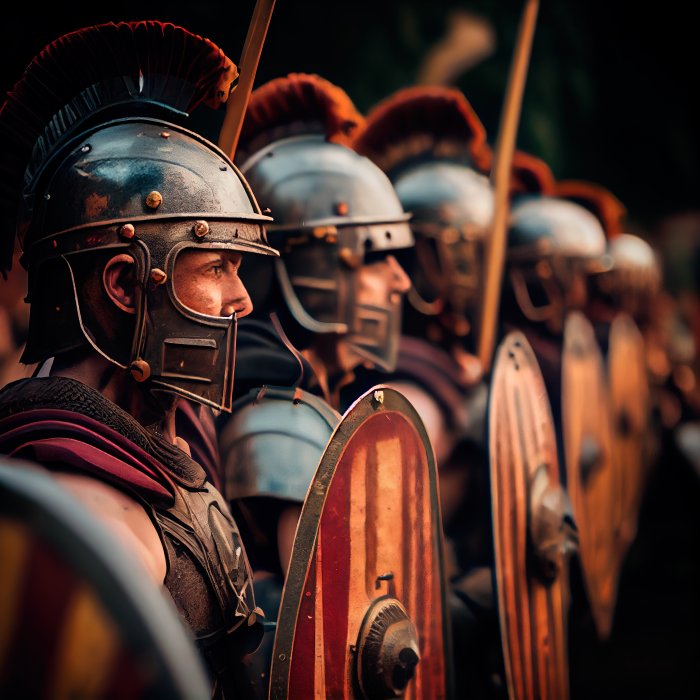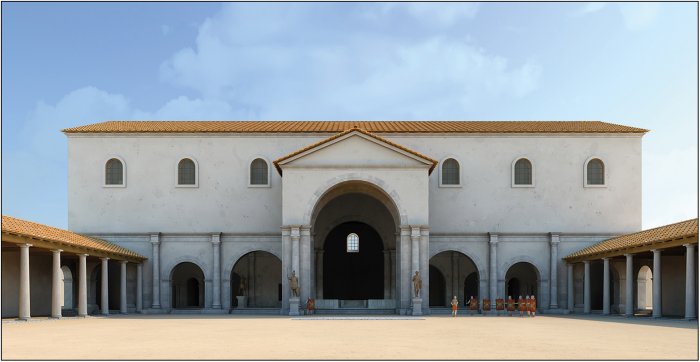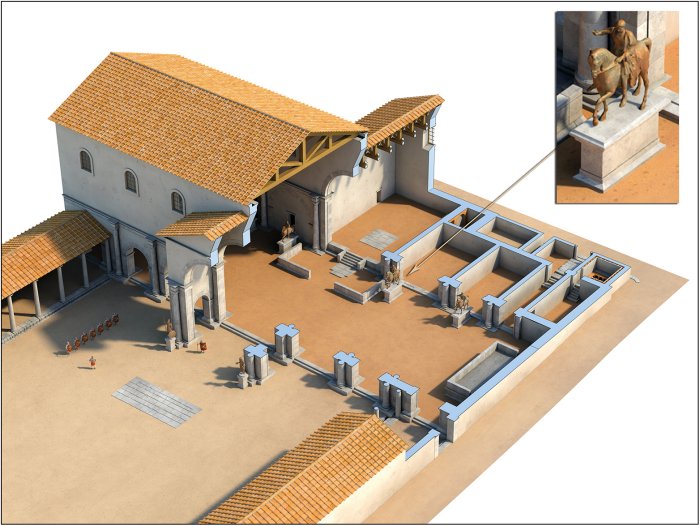Jan Bartek – AncientPages.com – Scientists have created an impressive 3D reconstruction of Principia, the legionary fortress in Novae (Bulgaria). By restoring inscribed monuments from the site in the 3D model, the research team has uncovered how the Roman army utilized religion to spread propaganda.
Founded sometime after the mid-first century A.D., Novae was initially one of the few great Roman legionary fortresses along the Empire’s border, forming part of the defenses (limes Moesiae) along the Danube in northern Bulgaria.

Roman soldiers. Credit: Adobe Stock – designprojects
The First Italic Legion was garrisoned there until the 430s. Within the fortress, covering almost 18 ha, the remains of a monumental headquarters building (principia), military hospital, and baths have been uncovered, and many years of excavation in the Principia have brought to light more than 300 inscriptions of all types.
Based on the discoveries made in the Principia in Novae, scientists participating in the project ‘In medio castrorum: Sculptural and epigraphic landscape of the central part of the legionary fortress at Novae’ have used digital rendering tools to unravel how ancient inscriptions, statues, and monuments were used to spread propaganda.

Novae. The entrance to the basilica principiorum and the reconstructed statues. Credit: J. Kaniszewski, Antiquity.
In their study published in Antiquity, the scientists explain that “the inscriptions were presented within the Principia, which, in addition to its practical administrative functions, provided a space for communication between soldiers and divine agents via inscribed monuments (e.g. statue bases and altars).
The propaganda aims required careful planning of the position of inscriptions within the Principia. The installation of a monument (funded by specific groups of donors) was marked by a military ceremony.”
Scientists could determine why particular statues were erected by studying the Roman inscriptions. Especially informative is a group of monuments set up by the primi pili. “These were the highest-ranking centurions, responsible for military supplies and also for religious activities, whose contribution to the Principia related to financial settlements at the end of their service . Analogous evidence was left by the primipilarii (late Roman civil clerks).
Both groups venerated Dionysus/Liber Pater, which was clearly an important deity who prevented famine as evidenced by seven statues and a depiction present in the early fifth-century building,” the scientists wrote in the study.
“The specific location of a statue displaying a particular text would determine the order in which that information was received, contributing to the drama of religious ceremonies.

Principia in Novae. The cross-section of the rear part of the building with reproduced statues Credit: J. Kaniszewski, Antiquity.
Although a faithful digital reconstruction of the sculptural decoration will always contain hypothetical elements, a virtual model showing the relationship between the inscribed monuments within the space will enable researchers to trace the way visual stimuli were received by participants in ceremonies within the Principia; it is a potentially useful tool for further analyses like the visibility of the ceremony performed in the Principia.
The epigraphic evidence from Novae shows that the transmission of propaganda at the centre of the Roman military base was controlled by a small group of people through religious acts relating to both spiritual and practical aspects of military provisioning. Detailed analysis of the content of the epigraphic texts, combined with knowledge of the material, workmanship, or type of statue exhibited in the building will reveal new insights,” the scientists concluded in their paper.
The study was published in the journal Antiquity
Written by Jan Bartek – AncientPages.com Staff Writer





